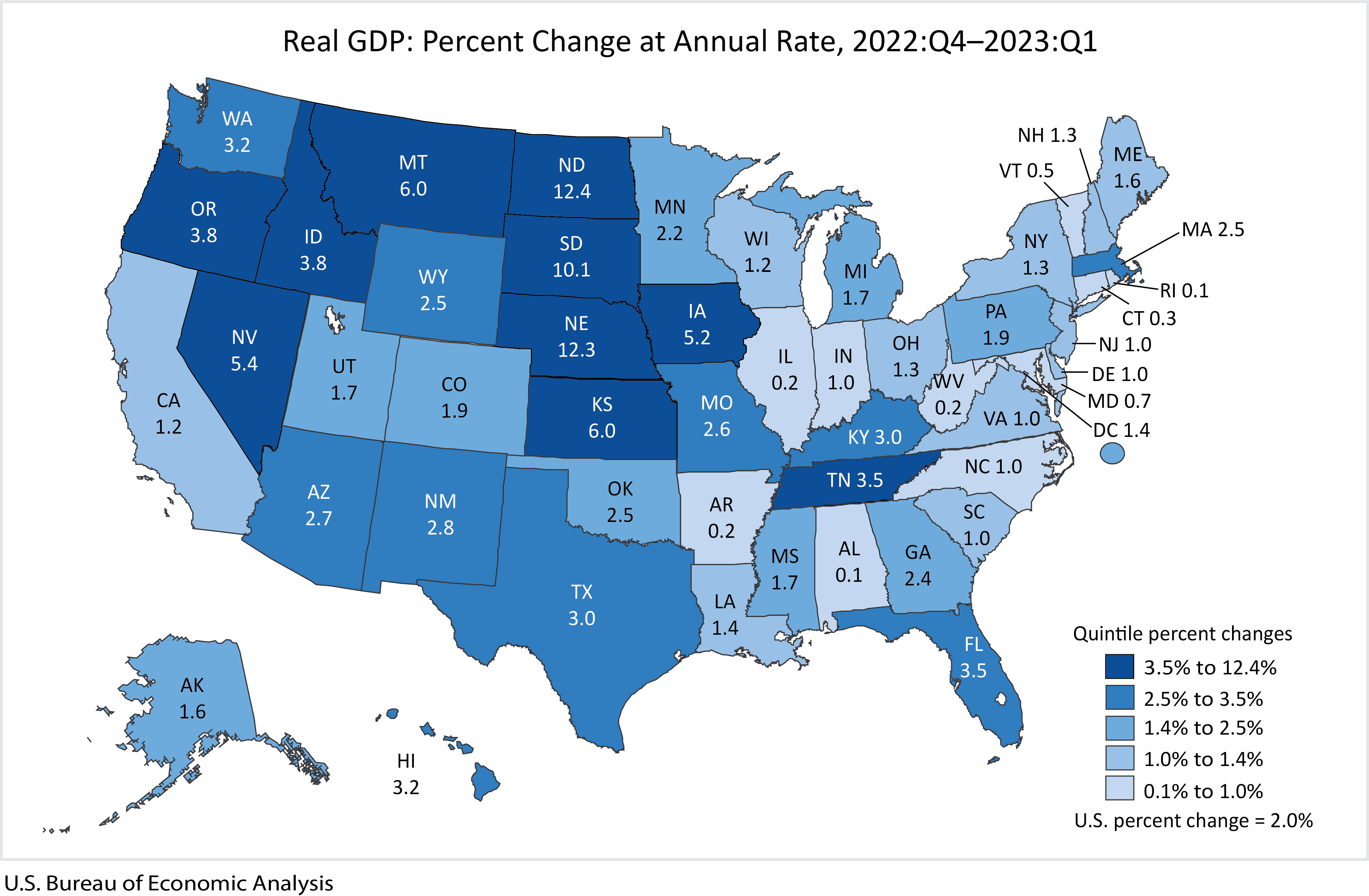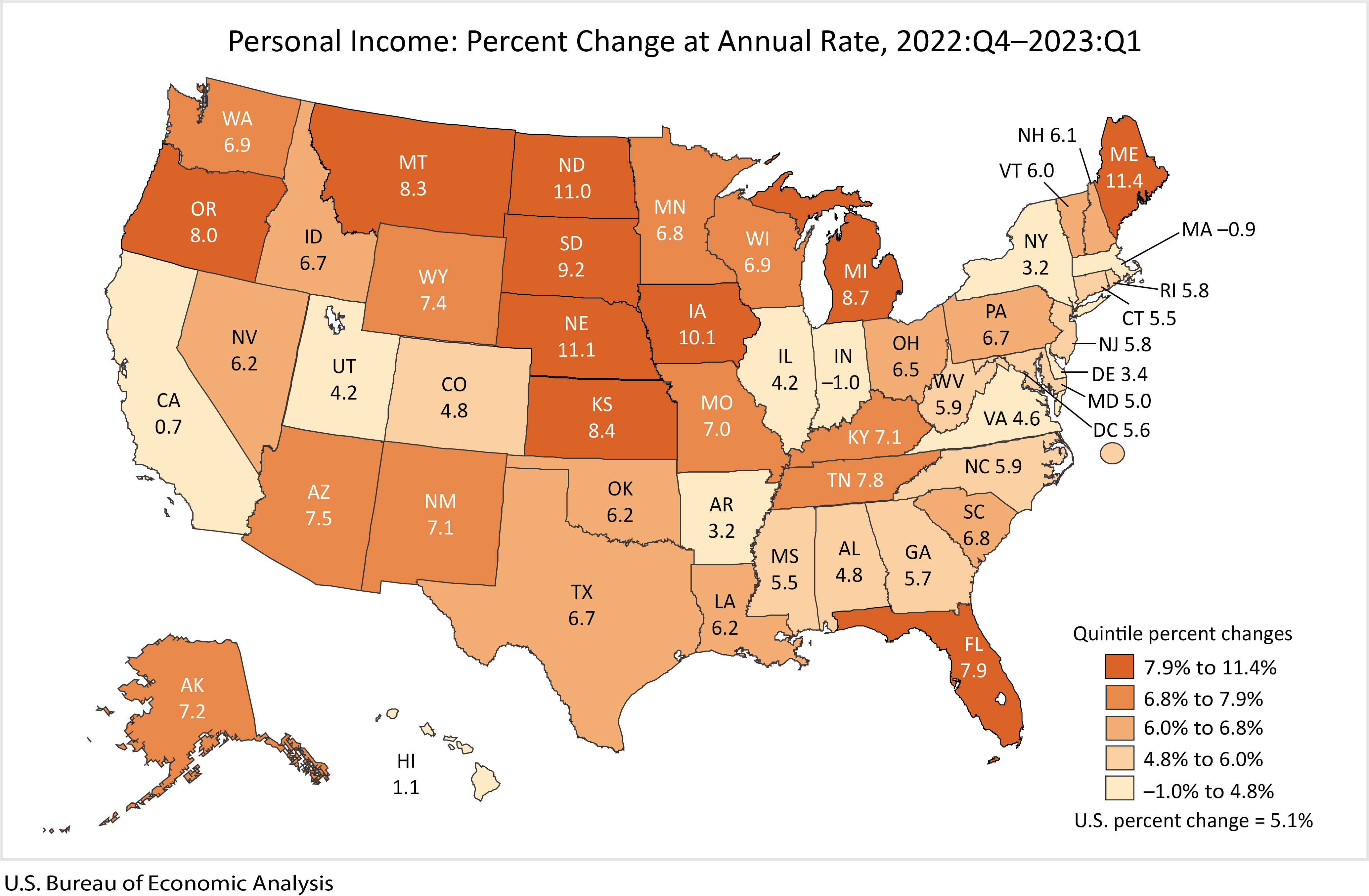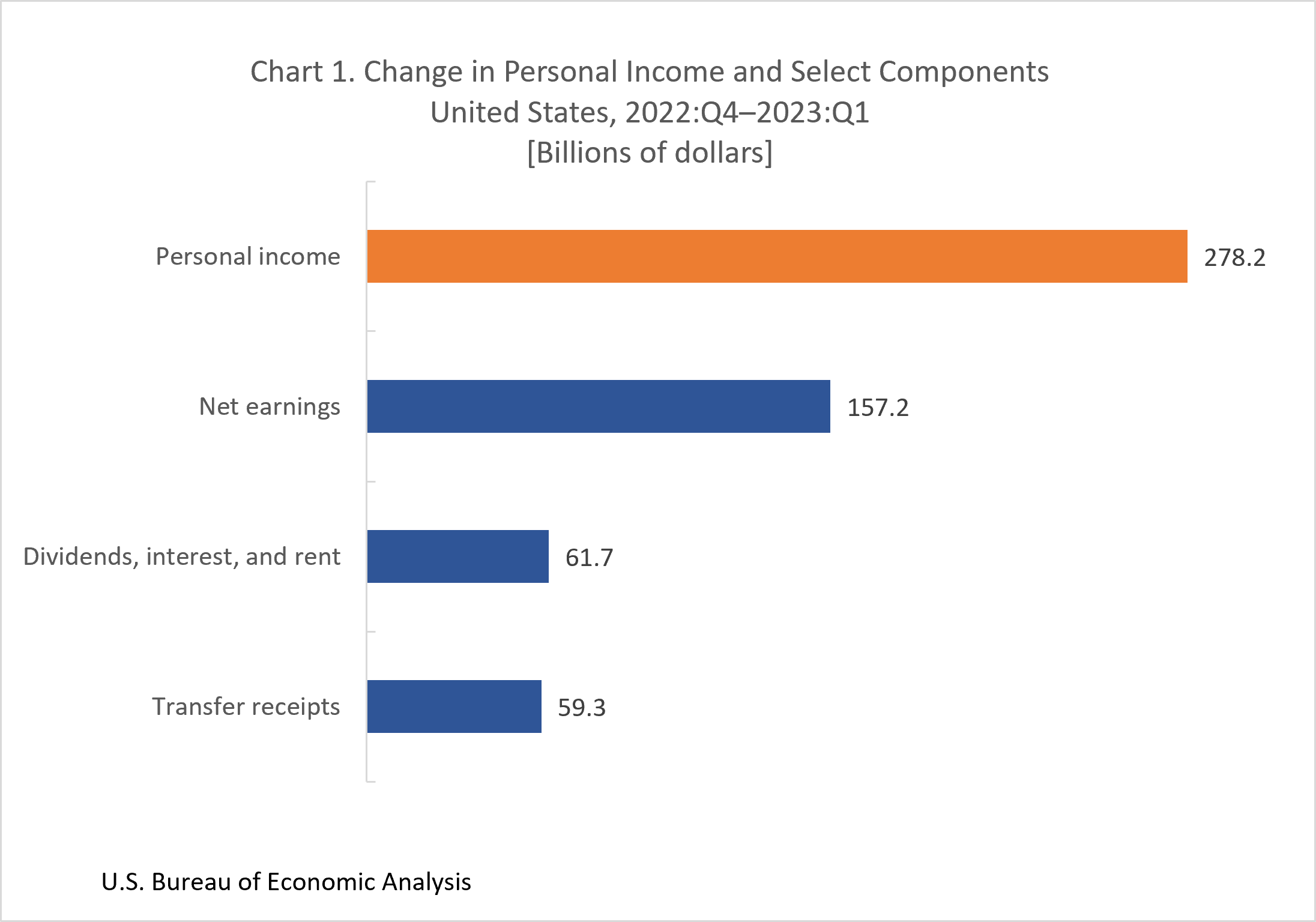News Release
Gross Domestic Product by State and Personal Income by State, 1st Quarter 2023
Real gross domestic product (GDP) increased in all 50 states and the District of Columbia in the first quarter of 2023, with the percent change ranging from 12.4 percent in North Dakota to 0.1 percent in Rhode Island and Alabama (table 1), according to statistics released today by the U.S. Bureau of Economic Analysis (BEA).
Current-dollar GDP increased in 47 states and the District of Columbia in the first quarter, with the percent change ranging from 14.1 percent in Nebraska to –2.9 percent in West Virginia.
Personal income, in current dollars, increased in 48 states and the District of Columbia in the first quarter of 2023, with the percent change ranging from 11.4 percent in Maine to –1.0 percent in Indiana (table 3).
Real GDP
In the first quarter of 2023, as real GDP for the nation grew at an annual rate of 2.0 percent, real GDP increased in 14 of the 23 industry groups for which BEA prepares quarterly state estimates (table 2). Health care and social assistance; retail trade; and agriculture, forestry, fishing, and hunting were the leading contributors to the increase in real GDP nationally.
- Health care and social assistance increased in all 50 states and the District of Columbia and was the leading contributor to growth in 15 states.
- Retail trade increased in all 50 states and the District of Columbia and was the leading contributor to growth in 8 states.
- Agriculture, forestry, fishing, and hunting increased in 33 states and was the leading contributor to growth in 13 states including North Dakota, Nebraska, South Dakota, Kansas, and Montana, the 5 states with the largest increases in real GDP.
- Finance and insurance decreased in all 50 states and the District of Columbia. This industry was the leading offset to growth in Rhode Island, one of the states with the smallest increase in real GDP.
Personal income
In the first quarter of 2023, as current-dollar personal income for the nation grew at an annual rate of 5.1 percent, state personal income increased in 48 states and the District of Columbia (table 3).
Nationally, earnings, property income (dividends, interest, and rent), and transfer receipts all contributed to the increase in personal income (chart 1).
Transfer receipts increased in 45 states and the District of Columbia, while growing 6.1 percent nationally. The growth in transfer receipts reflected an 8.7 percent increase in the cost-of-living adjustment for social security benefits. The percent change in transfer receipts ranged from 38.5 percent in Maine to –31.1 percent in Massachusetts (table 4).
Transfer receipts was the leading contributor to growth in personal income in Maine, the state with the largest increase in personal income in the first quarter. It was also the leading contributor to the decrease in personal income in Indiana and Massachusetts. Transfer receipts in all three states were impacted by one-time state refundable tax credits.
Property income increased in all 50 states and the District of Columbia, growing 6.0 percent nationally. The percent change ranged from 9.2 percent in Idaho to 3.4 percent in Kansas.
Earnings increased in all 50 states and the District of Columbia, growing 4.6 percent nationally. The percent change in earnings ranged from 12.4 percent in North Dakota to 0.1 percent in Arkansas (table 4).
Earnings increased in 19 of the 24 industries for which BEA prepares quarterly estimates (table 5). Professional, scientific, and technical services; state and local government; and health care and social assistance were the leading contributors to the overall increase in earnings. Increases in farm earnings was the leading contributor to growth in personal income in four of the five fastest-growing states including Nebraska, North Dakota, Iowa, and South Dakota.
Update of state statistics
Today, BEA also released revised quarterly estimates of personal income by state for the first through fourth quarters of 2022. This update incorporates new and revised source data that are more complete and more detailed than previously available and aligns the states with the national estimates from the National Income and Product Accounts released on June 29, 2023.
BEA also released new estimates of per capita personal income for the first quarter of 2023. BEA used U.S. Census Bureau (Census) population figures to calculate per capita personal income estimates for the first quarter of 2020 through the first quarter of 2023. For earlier estimates, BEA used intercensal population statistics that it developed based on Census methodology. See “Note on Per Capita Personal Income and Population.”
Upcoming comprehensive update of the Regional Economic Accounts
BEA will release the results of the comprehensive (or benchmark) update of the Regional Economic Accounts on September 29, 2023. This update will present revised statistics for GDP by state and state personal income.
Next release: September 29, 2023, 10:00 a.m. EDT
Gross Domestic Product by State and Personal Income by State, 2nd Quarter 2023


